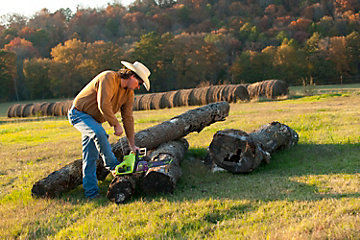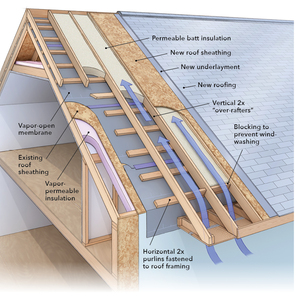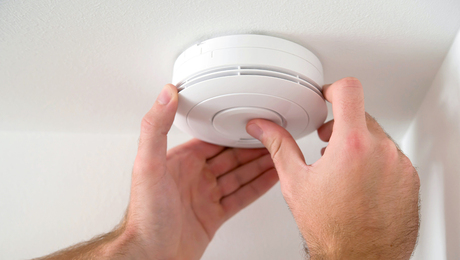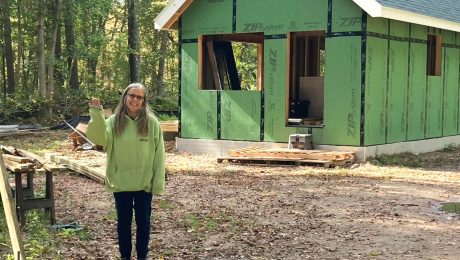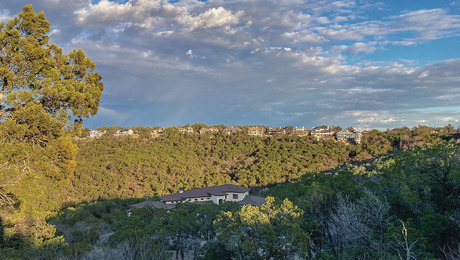Podcast Episode 149: Farmhouse Insulation, Home Inspections, and Ductwork Details
The Fine Homebuilding staff gives their best advice for improving leaky board-and-batten walls, buying old houses, keeping HVAC systems within conditioned space, and safely venting gas appliances.
In addition to addressing several listeners’ questions Patrick, Matt, and Rob, check in on a roof repair from a previous podcast where the owner of a hunting cabin in Vermont ignored their advice and decided to take the easy way out. The crew cut him some slack, acknowledging that sometimes you just have to get the job done and move on.
Editors’ project updates
Listener feedback from Episode 145. Roofing options.
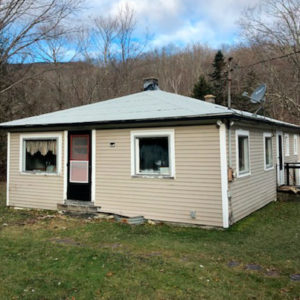 |
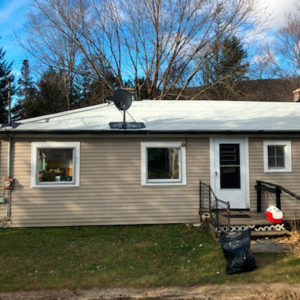 |
Dyami Plotke adds: First to address the roll roofing, don’t even entertain it. As one of you stated even over the best substrate roll roofing does not last very long.
The two options I would recommend would either be a complete rep followed by new architectural shingles or a go over with a face fasten roof panel such as in standard manufacturers R panel.
I say architectural rather than 3 tab shingles because due to their popularity architectural shingles are basically the same price as 3 tab while coming in a greater variety of colors. Architectural shingles are also easier to install.
Regarding the metal roof options you should expect that after a few months you may want to get back on the roof and check the fasteners as the double layer of crumbling asphalt is a less than stable substrate and the fasteners which were snug during initial installation May no longer be so after some time passes.
All things being equal the new asphalt shingles are probably a less technical installation and require less specialized tooling. That’s what I would recommend to a handy homeowner.
Question 1: : Wall insulation options?
Eric writes: Hi, I own a 120 year old farmhouse in farm country outside of Asheville NC that has had a few additions over the year. The oldest areas of the house do not have any insulation in the walls. You can feel the wind across the entire front if the house
We are removing the original old beat up beadboard and putting up nickel gap shiplap in its place. So I figured this would be a good opportunity to insulate.
The walls are true 2×4 studs- full 4 inches. The exterior “sheathing” is the original board and batten running vertically – approximately 10 inches wide x 1 inch thick boards on average with significant gaps between boards. Then there are layers of asphalt siding followed by aluminum siding.
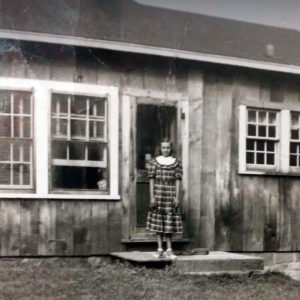 |
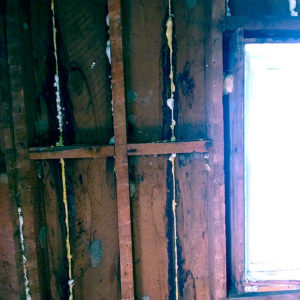 |
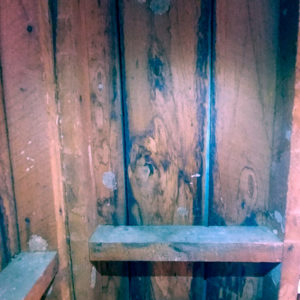 |
Question 1 – Even though the gaps between boards are covered by wood strips on exterior side should I fill those gaps with an expanding foam like Great Stuff? I suspect those gaps are where most of the wind is getting through.
Question 2 – How should I fill the wall cavities?Since insulation in the big box stores are made for either 2×4 or 2×6 dimensional lumber and mine are in between. Should I go with 1/2 inch rigid foam followed by standard 2×4 insulation or should I just use the 2×6 insulation or just 2×4 alone… I might be over thinking it
Question 3 – Are there any moisture/air flow issues I should look out for when insulating a wall this old
Basically, how would you guys handle this type of insulation job? Thanks for any help.
Also, I can send some photos if they are needed. Sorry in advance for not giving enough information.
Thanks for a great podcast,
Related links
5 1/2-in. insulation is ordinarily 21, but according to Allison’s chart you can expect

Question 2: What should I look for when purchasing an old house?
Nate writes: Hey guys, my wife and I love old houses. Our first home was a single story 1915 craftsman that had already been renovated. We are looking at selling that home and purchasing what appears to be a late 1800’s two story. I’m confident, (maybe overly confident) in my renovation abilities but would like your advice. What should I look for when purchasing an old house? The trim profiles are really shallow so I’m assuming that the plaster was covered with drywall at some point. The floors aren’t level and in one location the floor drops about 1 1/2 – 2in over about 3 feet. There is some rot below a toilet that I can see in the crawl space, but it’s not so much the visible things that scare me. Any advice that you have on purchasing an old house would be greatly appreciated.
The attached pictures are of the shallow trim, rotted subfloor, hardwoods around a toilet that seem to have been wet at some point, and a very interesting flashing detail.
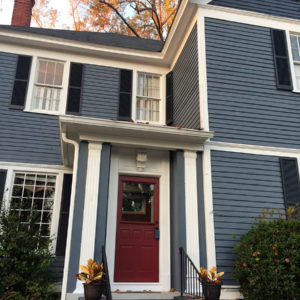 |
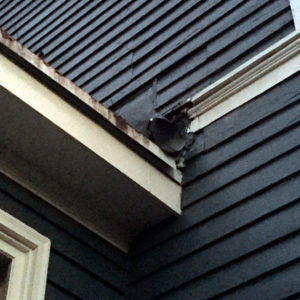 |
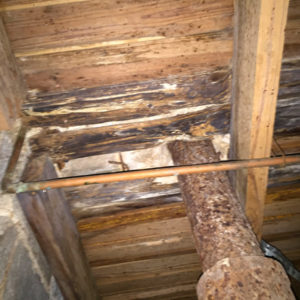 |
Related links
Question 3: What would your ideal roof assembly look like?
Eric writes: If you were building a new home (in zone 4), what would your ideal roof assembly look like? If the idea were to route the HVAC system through the attic (I don’t like the look of minisplits), and so you wanted the attic to be in the conditioned envelope, what’s the best way of insulating the roof and preventing worry about insulation, water, and roof sheathing drying appropriately?
If you “need more information”, I’m looking to build a home in a few years and don’t have an architect or builder chosen. But since I always hear about you trying to fix other people’s problems, I’d like to know how you’d do it if you were starting from scratch. Thanks.
Table N1102.1.2 R49 Kansas, Missouri, So. Illinois, So. Indiana, Kentucky, Virginia, New Jersey, Delaware, Long Island, NY
Related links
Question 4: Combined vent pipe?
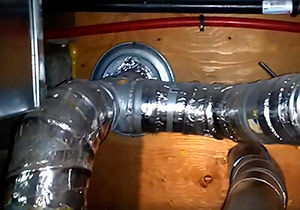
Related links
- Instruction Manual for Residential Power Vent Gas Water Heaters with Hot Surface Ignition
- Residential Gas – FVIR Certified Induced Draft Water Heaters
Parting shots!
- Chainsaw helmet with full-coverage visor to protect the eyes and ear protection to prevent hearing loss. Never use a chainsaw without a full-coverage helmet.
- Thick work gloves will help protect your hands while operating the saw.
- Steel-toe work boots with built-in saw protection protect feet from falling objects and will reduce the extent of the injury in case the saw accidentally comes into contact with your feet while the chainsaw is running.
SPECIAL DEAL!
Fine Homebuilding’s Holiday Sale is in full swing. Podcast listeners can save 20% in our store on favorite titles like the For Pros By Pros series. Visit Tauntonstore.com and use code GIFT20 to get the discount.
New gift memberships
We have a new feature in the Fine Homebuilding store—you can now buy gift memberships to FineHomebuilding.com, giving access to all of our feature articles and how-to videos.
Visit FineHomebuilding.com/membergift for details!
This episode of the podcast is brought to you by Danner and SupplyHouse.com
This episode of the Fine Homebuilding Podcast is brought to you by Danner boots. We’re not fortune tellers, but when you lace up our new Stronghold work boots, it’s easy to see that the future looks strong. We’re Danner, and after 85 years of making boots for the unforgiving Pacific Northwest…well, that means our boots come with deep roots. And the new Stronghold work boot does just that. This is what happens when iconic quality runs into modern technology. You get tomorrow’s classic today. Get into the Stronghold for strength that starts right from where you stand. Find your local store at Danner.com.
This episode of the Fine Homebuilding Podcast is also brought to you by SupplyHouse.com. When you need plumbing, heating, and HVAC products in your starting lineup, take the field at SupplyHouse.com with easy online ordering. SupplyHouse.com has a stacked team featuring lightning-fast delivery, industry-low prices, and undefeated service. Have a question? Give their friendly support staff a call. If you’re a contractor, ask about the exclusive SupplyHouse.com trademaster program for industry professionals. Stop fumbling away your time and money, and take it to the house: SupplyHouse.com.
We hope you will take advantage of a great offer for our podcast listeners: A special 20% off the discounted rate to subscribe to the Fine Homebuilding print magazine. That link goes to finehomebuilding.com/podoffer.
The show is driven by our listeners, so please subscribe and rate us on iTunes or Google Play, and if you have any questions you would like us to dig into for a future show, shoot an email our way: [email protected]. Also, be sure to follow Justin Fink and Fine Homebuilding on Instagram, and “like” the magazine on Facebook. Note that you can watch the show above, or on YouTube at the Fine Homebuilding YouTube Channel.
The Fine Homebuilding Podcast embodies Fine Homebuilding magazine’s commitment to the preservation of craftsmanship and the advancement of home performance in residential construction. The show is an informal but vigorous conversation about the techniques and principles that allow listeners to master their design and building challenges.
Other related links
- All FHB podcast show notes: FineHomebuilding.com/podcast.
- #KeepCraftAlive T-shirts support scholarships for building trades students. So go order some shirts at KeepCraftAlive.org.
- The direct link to the online store is here.
